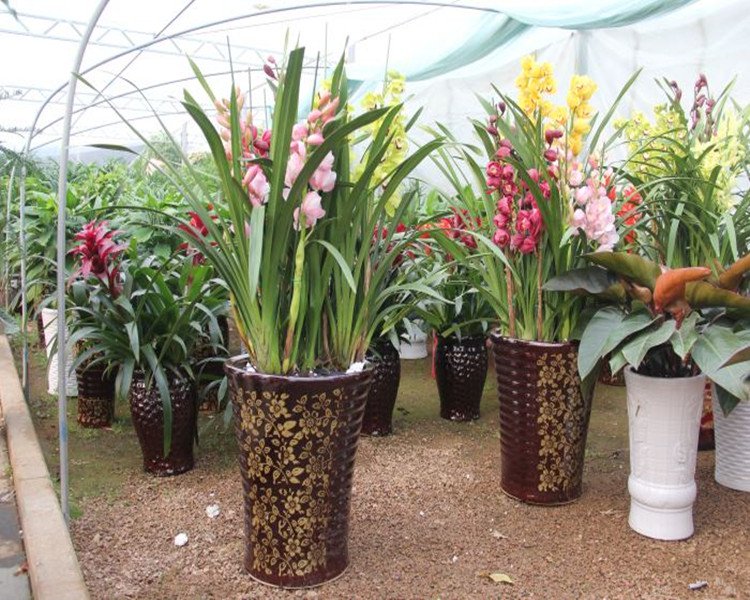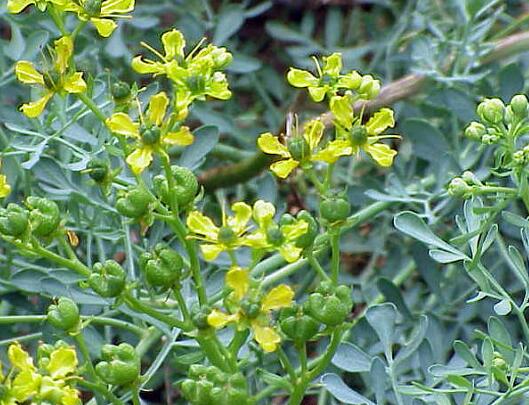What about the rotten roots of Cymbidium? it is a plant that can remain evergreen all the year round.
Cymbidium is a kind of plant that can keep evergreen all the year round, which is very suitable for indoor culture. Cymbidium is an axial growing orchid. When choosing a flowerpot, you need to choose a long tube-shaped pot. And the culture environment must be well ventilated, and charcoal should be added to the bottom of the flowerpot to facilitate drainage. The main purpose of this is to prevent the roots of Cymbidium from rotting. Because poor drainage or poor ventilation will lead to the root rot of Cymbidium, if the root of Cymbidium is half rotten, then Cymbidium can basically be judged to be finished. Here's what we should do if we encounter the rotten roots of Cymbidium.

What about the rotten roots of Cymbidium
1. Cut off the rotten parts
Pour out the cymbidium and leave it in a cool, dry and ventilated place for one or two days. All the rotten roots that have blackened will be cut off, and the plants that lean against the rotten roots will be removed, leaving no hidden trouble. Be sure to water less, and less when watering nutrition and rooting water. In case it happens again.
2. Strictly disinfect orchid plants and plant materials.
Soak the orchid plant in 1 ‰ potassium permanganate solution for 2 hours, rinse with clean water, and dry in the sun for 2 hours. The new plant materials I use are: catalpa bark 50%, broken brick particles 20%, honeycomb cinder 20%, rotten pine needle 10%. After washing the first three kinds of clean water, soak and disinfect them with boiling water. Pine needles are exposed to the sun and sprayed with 2% topiramate solution for disinfection.
3. Switch to mud basin cultivation.
Cymbidium with rotten roots should not only have a certain degree of humidity, but also not be too wet. This requires good permeability. I chose two mud basins. In order to increase the air flow, I enlarged the water seepage hole at the bottom of the basin and put several long wooden strips on the bottom of the basin to increase the air permeability. Plant the sterilized Cymbidium in a basin, spread a layer of bark of 2-3 cm in diameter and broken bricks the size of walnut at the bottom, fill the middle with a medium-sized plant mixture, and top with the smallest one.
4. Daily management
After watering the roots of Cymbidium, Cymbidium was cured in low light for more than 10 days, sprayed twice a day, and placed on the south windowsill after half a month. About 1 month later, the plant grew new roots, and 3 months later, purplish red new buds grew on the pseudobulbs. It is not allowed to apply fertilizer before growing new roots, and only light fertilizer can be applied after growing new roots and new buds. 1-2 ‰ compound fertilizer is added to the water for raising goldfish.
In summer, the high temperature put a shallow plastic pot under Cymbidium, which filled with water, increased humidity, sprayed around the flowerpot every morning, middle and evening, and opened windows for ventilation to make it through the summer smoothly. When carbendazim or topiramate was sprayed every half a month, there were almost no diseases and insect pests.
In November, two fat flower buds grew on the pseudobulbs of the newborn seedlings closest to the windowsill. At this time, phosphate fertilizer was added every 10 days, and foliar buds were sprayed with 2 ‰ potassium dihydrogen phosphate, and all the new leaf buds were removed to concentrate nutrients on the growth of flower buds.
- Prev

The most complete classification and formulation of plant diseases in history
Plant disease refers to the phenomenon that plants undergo a series of morphological, physiological and biochemical pathological changes under the influence of biological or abiotic factors, thus affecting human economic benefits. The symptoms of plant diseases can be divided into five types: discoloration, necrosis, decay, wilting and deformity.
- Next

What is the white orchid flower language, the pure and flawless love flower language net, the white orchid flower language and the legend white orchid symbolizes what flower language net
Since ancient times, it has been said that flowers match beauty, so flowers have almost become the best choice for women. When we send flowers blindly, we should first understand what they represent, what kind of flowers there are, and whether it is appropriate to give them to people. The poet of the Tang Dynasty chanted: "Magnolia is seen in the morning and evening, and the old area is in the spring". If you admire Magnolia every day and smell the strong fragrance, you can be an old heart child, keep the years, and stay young forever. White orchids are well known for their special effects in beauty, bathing, diet and medical treatment.
Related
- Fuxing push coffee new agricultural production and marketing class: lack of small-scale processing plants
- Jujube rice field leisure farm deep ploughing Yilan for five years to create a space for organic food and play
- Nongyu Farm-A trial of organic papaya for brave women with advanced technology
- Four points for attention in the prevention and control of diseases and insect pests of edible fungi
- How to add nutrient solution to Edible Fungi
- Is there any good way to control edible fungus mites?
- Open Inoculation Technology of Edible Fungi
- Is there any clever way to use fertilizer for edible fungus in winter?
- What agents are used to kill the pathogens of edible fungi in the mushroom shed?
- Rapid drying of Edible Fungi

